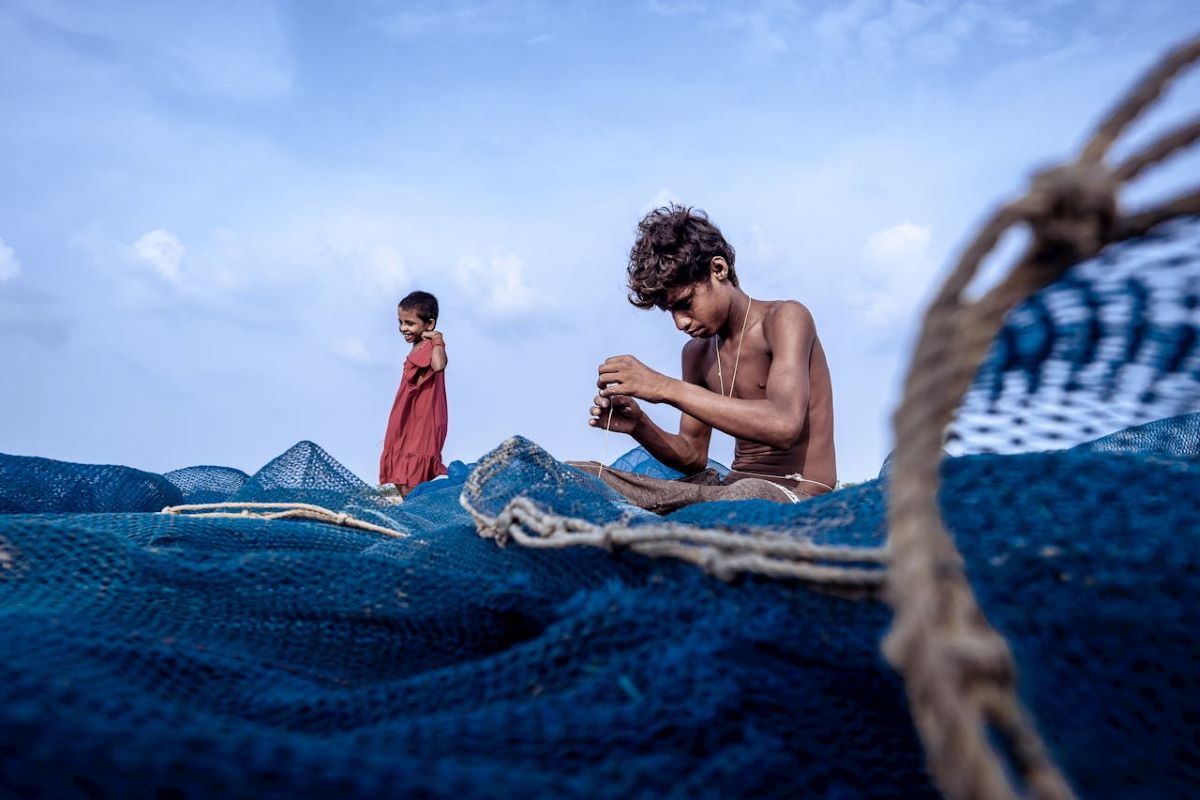Fishing in India is an ancient practice that remains vital to the country’s culture, economy, and diet. With its extensive coastline, numerous rivers, and vast inland water bodies, India boasts a rich and diverse fishing tradition that has evolved over millennia.
A Historical Overview
Fishing has been a crucial part of Indian life since the earliest civilizations. The Indus Valley Civilization (around 3000 BCE) provides some of the earliest evidence of organized fishing practices. Artifacts and cave paintings from ancient times depict various fishing techniques, showing how integral fishing was to early Indian societies.
In the coastal regions, traditional fishing techniques and tools have been passed down through generations. One such iconic tool is the Chinese fishing net, or “Cheena Vala,” introduced by Chinese traders in Kerala. These massive, cantilevered structures have become a symbol of the state’s fishing culture.
Types of Fishing Practices in India
India’s diverse geography has led to a wide range of fishing practices:
- Marine Fishing: With a coastline stretching over 7,500 kilometers, marine fishing is a significant activity in states like Kerala, Tamil Nadu, Gujarat, and Maharashtra. Fishermen use various types of boats and nets, such as trawl nets, gill nets, and seine nets, to catch fish like sardines, mackerel, and tuna.
- Inland Fishing: Rivers, lakes, and reservoirs are abundant in India, providing ample opportunities for inland fishing. States like West Bengal, Andhra Pradesh, and Assam are known for their rich freshwater fish resources, including species like rohu, catla, and hilsa.
- Brackish Water Fishing: India also has extensive brackish water areas in estuaries, lagoons, and backwaters. Brackish water fishing is particularly prominent in regions like the Sundarbans and the backwaters of Kerala, where species like prawns, crabs, and various types of fish are harvested.
The Role of Fishing Nets
Fishing nets are central to the practice of fishing in India, and their evolution reflects changes in both technology and sustainability:
- Traditional Nets: Early fishing nets were made from natural fibers like cotton, jute, and coir. These handmade nets were meticulously crafted to suit local fishing conditions. Traditional types of nets include cast nets, gill nets, and drag nets, each designed for specific fishing techniques and environments.
- Modern Nets: With technological advancements, synthetic materials like nylon and polyethylene have replaced natural fibers. These modern nets are more durable, easier to handle, and offer better performance. Innovations such as knotless nets and biodegradable materials are also being introduced to reduce environmental impact.
Sustainable Fishing Practices
The sustainability of fishing practices has become a growing concern in India. Overfishing, pollution, and habitat destruction threaten fish populations and aquatic ecosystems. To address these challenges, several initiatives have been implemented:
- Regulation and Policy: The Indian government has introduced various regulations to promote sustainable fishing, including restrictions on fishing during breeding seasons, minimum net mesh sizes, and protected marine areas.
- Aquaculture: Fish farming is gaining popularity as a sustainable alternative to capture fishing. By cultivating fish in controlled environments, aquaculture helps reduce the pressure on wild fish populations and provides a reliable source of seafood.
- Community Involvement: Local fishing communities are increasingly involved in conservation efforts. Programs aimed at educating fishermen about sustainable practices, such as using selective fishing gear and avoiding overfishing, are essential for preserving marine resources.
The Economic and Cultural Impact
Fishing is not just an economic activity in India; it’s a way of life. Millions of people depend on fishing for their livelihood, particularly in coastal and riverine areas. The sector also supports a wide range of ancillary industries, from boat building to fish processing.
Culturally, fishing communities have their unique traditions, festivals, and rituals centered around their maritime lifestyle. These cultural practices enrich the social fabric of India and highlight the deep connection between people and the sea.
Conclusion
Fishing in India is a multifaceted industry deeply rooted in tradition yet constantly evolving with new technologies and sustainable practices. The diverse fishing techniques, the crucial role of fishing nets, and the cultural significance of fishing communities all underscore the importance of this age-old practice. As India navigates the challenges of sustainability and environmental conservation, the future of fishing looks promising, balancing tradition with innovation to ensure the health of its aquatic resources and the prosperity of its people.
Featured Image Courtesy Kuntal Biswas




